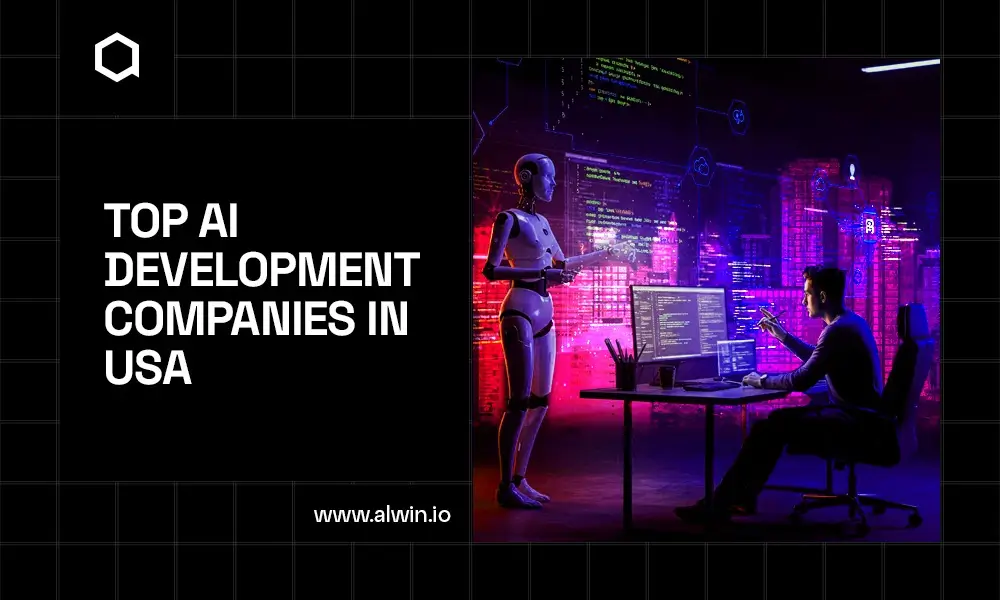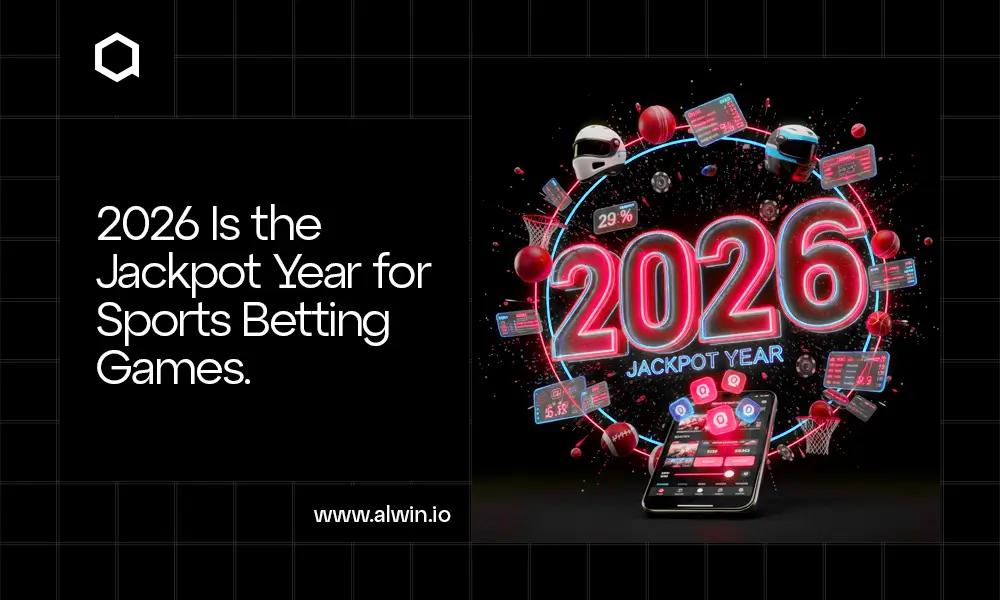Hello Gamers,
Remember when playing games was just for fun? Well, those days are evolving fast. With Play-to-Earn (P2E) games, players are now earning real rewards for doing what they like. And behind every successful P2E game is a solid development partner that knows how to mix fun with functionality, gameplay with the blockchain, and tokens with real-world value. That’s where a P2E Game Development Company steps in.
Whether you're planning to launch the next Axie Infinity or a unique NFT-based metaverse game, working with the right team can make or break your vision. In this blog, we’ll structure down what makes a top-tier P2E game development company, what features and technologies are involved, and how you can turn your gaming idea into a rewarding Web3 experience for both you and your players.
Evolution of Play-to-Earn Games
The roots of P2E gaming trace back to early digital economies in MMORPGs like Second Life (2003) and World of Warcraft (2004), where players traded virtual items, often for real money. However, these systems were controlled centrally by game developers. Blockchain technology and NFTs took the idea further. In 2013, Huntercoin emerged as an experimental crypto game. Then, in 2017, CryptoKitties popularized digital asset ownership, letting users breed and sell unique virtual cats as NFTs.
By 2018, Axie Infinity launched, becoming a major milestone for P2E. Combining NFTs, token rewards, and community-driven economies, it skyrocketed to millions of daily users and millions in tokenized asset trading. It reshaped gaming into a vehicle for earning real income. 32% of players earn over $100/month, with top gamers making more than $600
Gamers invest around 12–16 hours weekly in P2E games. The Sandbox reaches over 1 million monthly users, earning thousands through land and asset trading. In North America (37% of P2E market share in 2024) generated around $1 billion in revenue
What is a Play-to-Earn (P2E) Game?
A Play-to-Earn (P2E) game is a type of online video game where players can earn real-world rewards, usually in the form of cryptocurrency or NFTs, just by playing the game. Unlike traditional games where all the fun (and money) stays with the game developers, P2E games let players actually own and profit from their in-game achievements, assets, or time spent.
Example
Imagine you're playing a farming game. You plant crops, harvest them, and trade your produce with other players. In a regular game, all of this just happens inside the game world—it’s fun, but nothing more. But in a Play-to-Earn game, the crops you grow could be tokenized as NFTs, and the currency you earn could be a real crypto token with actual market value.
Let’s say after an hour of playing, you earn 20 tokens. You can either use them to buy more in-game items or you can sell those tokens for real money on a crypto exchange. Some P2E games also let you rent or sell your digital assets (like rare weapons, avatars, or land) to other players, giving you even more earning potential.
Play-to-Earn Game Development Company
In the rapidly evolving world of Web3, Play-to-Earn (P2E) game development has become a game-changer literally. At WeAlwin Technologies, we specialize in building blockchain-based P2E games that not only entertain but empower players by turning their gameplay time into real-world value.
As a leading Play-to-Earn game development company, we blend advanced game mechanics, token economies, NFTs, and immersive storytelling to deliver Web3 gaming platforms that are engaging, profitable, and future-ready. From concept to launch, we handle everything—from designing smart contracts and minting in-game NFTs to building multiplayer environments and secure crypto payment gateways.
Popular Play-to-Earn (P2E) Games in the Market
The Play-to-Earn (P2E) revolution has shifted gaming from a purely recreational activity to a full-fledged income stream for players worldwide. By blending entertainment with blockchain technology, several standout games have pioneered this movement. Here's a closer look at the most popular P2E games redefining how people play and earn.
Axie Infinity
Axie Infinity is perhaps the most recognized name in the P2E space. In this game, players collect and battle adorable digital creatures called Axies—each of which is a unique NFT. Through daily battles, breeding, and marketplace trading, players earn Smooth Love Potion (SLP) tokens, which can be sold or exchanged for real money. Built on Ethereum and utilizing the Ronin sidechain to reduce transaction fees, Axie Infinity became a major source of income for thousands of players, especially in regions like Southeast Asia.
The Sandbox
The Sandbox is a metaverse game where creativity meets ownership. Players can buy virtual land, design games, and sell digital assets—all using the SAND token. Every piece of land and asset in the Sandbox is an NFT, which means players can truly own and monetize their in-game creations. With partnerships from major brands and celebrities, The Sandbox is one of the leading platforms blending gaming, real estate, and decentralized ownership.
Decentraland
Decentraland is a fully decentralized 3D virtual world where users can socialize, explore, and trade land and digital goods. Players earn through renting, selling land NFTs, or offering services inside the game’s metaverse. Powered by Ethereum and its native token MANA, Decentraland gives full control to its community, making it more than just a game—it's a digital society where creativity and commerce go hand-in-hand.
Gods Unchained
Gods Unchained offers a unique twist on traditional trading card games. It’s free to play but gives players the ability to truly own their cards as NFTs. As you battle and win matches, you earn the GODS token and card packs, which can be used in gameplay or traded on the open market. Its strong emphasis on strategy and competitive play makes it popular among gamers looking for both challenge and value.
Star Atlas
Star Atlas takes players to a visually stunning, futuristic universe. This massively multiplayer online game combines space exploration, strategy, and real-time battles. Players can earn by staking spaceships, mining resources, or trading rare NFTs within the game. Built on the high-speed Solana blockchain and backed by its ATLAS and POLIS tokens, Star Atlas pushes the boundaries of blockchain gaming with immersive gameplay and deep economic layers.
My Neighbor Alice
My Neighbor Alice is a social farming game where players buy land, grow crops, and build communities, similar in style to Animal Crossing but built on blockchain. Each item, including land plots, tools, and decorations, is an NFT. Players earn through completing quests, selling items, or participating in in-game events. With a light-hearted tone and play-to-earn mechanics, it’s ideal for casual gamers entering the Web3 world.
Illuvium
Illuvium is one of the first AAA blockchain-based RPGs. In this visually rich open-world game, players capture powerful creatures called Illuvials, train them, and use them in auto-battles. These creatures are NFTs that can be upgraded and traded. Built on the Ethereum blockchain via Immutable X, Illuvium offers both an immersive gaming experience and deep DeFi integration through its ILV token.
Each of these P2E games brings a unique twist to the world of blockchain gaming, combining skill, strategy, creativity, and economy. As the Play-to-Earn model matures, these games continue to set the benchmark for what’s possible when players are rewarded not just for winning, but simply for participating in digital worlds.
Exciting Features in Our Play-to-Earn Game Development
At WeAlwin Technologies, we go beyond just game creation—we deliver a Play-to-Earn (P2E) experience that’s engaging, rewarding, and blockchain-powered. Our feature-rich P2E games are designed to not only entertain users but also give them real value through token-based economies, NFT ownership, and immersive gameplay mechanics. Here’s a look at the standout features we build into every P2E game:
Blockchain-Integrated Ownership
Players own in-game assets like characters, skins, land, or weapons as NFTs. These assets are securely stored on the blockchain, giving players full ownership, the ability to trade or sell them, and a permanent place in the game’s ecosystem.
Play-to-Earn Token Model
We integrate native crypto tokens into your game’s economy, allowing users to earn by completing tasks, winning battles, or participating in events. Tokens can be used for in-game purchases or traded on crypto exchanges, making the game financially rewarding for players.
Engaging Game Mechanics
From farming, battling, and racing to crafting and trading, we build diverse gameplay loops that keep users hooked. Every action is connected to a reward system, keeping players motivated to play, progress, and earn.
In-Game NFT Marketplace
We create custom NFT marketplaces where players can buy, sell, and trade in-game assets. Whether it’s skins, rare items, or virtual real estate, the marketplace provides a continuous source of engagement and revenue for both users and platform owners.
Secure Wallet Integration
Players can connect seamlessly using popular Web3 wallets like MetaMask, Trust Wallet, or WalletConnect. We also build in wallet protection features, ensuring safe storage and interaction with in-game assets and tokens.
Multi-Chain Compatibility
Our games support multiple blockchain networks including Ethereum, BNB Chain, Polygon, and Solana. This opens up greater accessibility for users and ensures faster, lower-cost transactions within the game environment.
Leaderboards, Tournaments & PvP Battles
Gamification is at the heart of P2E. We include competitive features like global leaderboards, tournaments, and PvP battle modes, encouraging users to earn rewards and climb the ranks.
Token Staking & Yield Farming
Give players more ways to earn. We incorporate DeFi features like staking and farming, where users can lock tokens or NFTs to earn passive income while playing or holding their assets.
Social & Community Features
Players can team up, join guilds, chat, and collaborate on missions. These social features help build loyal communities and turn your game into a long-lasting ecosystem rather than a one-time experience.
Every feature we develop is aimed at making your Play-to-Earn game more dynamic, user-friendly, and financially rewarding for both the player and the project owner. With WeAlwin, you’re not just launching a game—you’re launching the future of gaming.
Why We Stand as a Top P2E Game Development Company?
At WeAlwin Technologies, we’ve established ourselves as a leading Play-to-Earn (P2E) game development company by blending deep gaming knowledge with advanced blockchain expertise. Our core strength lies in creating fully customized, scalable gaming ecosystems that not only engage users but also empower them to earn real-world value. From immersive gameplay built on engines like Unity and Unreal to error-free integration with blockchains like Ethereum, Polygon, BNB Chain, and Solana, we cover the entire spectrum.
Our team delivers end-to-end solutions, from game conceptualization and NFT creation to smart contract development, tokenomics design, wallet integration, and secure marketplace deployment. What truly sets us apart is our ability to craft well-balanced, engaging in-game economies using native tokens and NFTs that hold real-world value and utility. We also prioritize user trust and platform security by performing rigorous smart contract audits and integrating high-level security protocols throughout the development cycle.
With a proven track record of successful launches and global clientele—from startups to enterprise-grade studios—we offer more than just game development. We offer a vision, a roadmap, and a partnership to help you launch, scale, and lead in the fast-growing world of Web3 gaming. If you’re looking to create a Play-to-Earn platform that delivers both excitement and economic opportunity, WeAlwin is the team to bring it to life.



